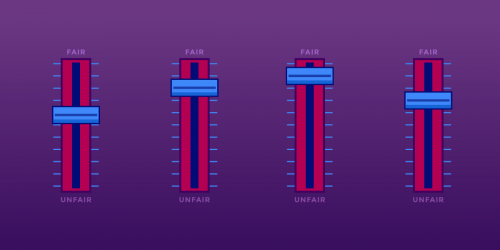Another court has ruled that streaming local broadcast TV channels to mobile devices is something that only traditional pay-TV companies can do—startups need not apply. The Ninth Circuit appeals court has ruled that FilmOn, an Internet video service, cannot use the license created by Congress for “secondary transmissions” of over-the-air TV broadcasts. That likely means that FilmOn and other Internet-based services won’t be able to stream broadcast TV at all. That’s a setback for local TV and the news, weather, local advertising, and community programming it carries.
The court’s harmful ruling is bad enough, and is made worse by the way it arrived at that decision. Instead of interpreting the Copyright Act according to its own independent judgment, the court deferred to the opinion of the Register of Copyrights, an official who has no authority to make or interpret laws on her own. And the Register has often acted as more of an advocate for the media and entertainment industries than a neutral authority. Ms. Pallante, the former Register, famously said that “copyright is for the author first and the nation second,” and has gone on to become the head of a trade association for publishers.
Can startups take advantage of the law that allows incumbent pay-TV services to carry broadcast TV?
The fight to send broadcast TV over the Internet has been a long one. For most people in the U.S., it’s hard if not impossible to watch local TV stations live over the Internet. Unlike other forms of video programming that are available in many different ways, local broadcasts usually require a TV set and a finicky antenna or an expensive cable subscription. Of course, the technology to send local broadcast TV to Internet-connected devices has been around for a while. Copyright law, not technology, has been the barrier.
Copyright applies when shows are transmitted “to the public.” That means cable operators need licenses from copyright holders. And since the Supreme Court’s Aereo decision, Internet-based services that “look like cable” to the customer also need licenses. The major difficulty is that the programs, commercials, and other material shown on TV channels have many different copyright holders. A service that wants to help viewers see those channels in more places and on more devices is faced with the difficult (in fact, often impossible) task of negotiating a license with each and every one of those owners before their material goes on the air. Fail to license even a single program or commercial and the would-be cable competitor risks lawsuits and ruinous copyright penalties.
But copyright law also includes a way for pay-tv systems to get the permissions they need by paying a set fee. That mechanism, known as Section 111, applies to any “facility” that “receives signals” from broadcast TV stations and “makes secondary transmissions” of those signals to paying subscribers. The law was passed long before Internet video streaming, but its core definition of a “cable system” is written broadly enough to include an Internet-based system like FilmOn’s.
Nope, because that law is unclear and the Register of Copyrights said it shouldn’t apply.
Major TV and movie studios have long opposed letting Internet-based services use the Section 111 license, and so did Maria Pallante, who was the Register of Copyrights (the head of the Copyright Office) until 2016. She wrote several letters and papers arguing that only traditional cable systems should be able to use the license.
In the studios’ case against FilmOn, one of several they filed around the country, the federal district court in Los Angeles ruled that Congress wrote Section 111 broadly enough to include Internet-based services. This week, the Ninth Circuit reversed that decision.
The court recognized that applying a complex 41-year-old law to today’s technology is not straightforward: “FilmOn and other Internet-based retransmission services are neither clearly eligible nor clearly ineligible for the compulsory license [Section] 111 makes available to ‘cable systems.’” At this point, the court could have grappled with the purposes of the law, its legislative history, and its effects on the TV market to reach a result. But it didn’t do this in any significant way. Instead, it “deferred” to the Register of Copyrights and treated her opinions on this question as the final word. The judges wrote that the Copyright Office “has a much more intimate relationship with Congress and is institutionally better equipped than we are to sift through and to make sense of the fact and heterogeneous expanse that is the [Copyright] Act’s legislative history.”
That’s a troubling conclusion. While the Copyright Office staff might be more familiar with this area of law than a federal judge, the Office doesn’t have the authority to make or interpret laws. Treating the Register of Copyrights’ opinions about the law as binding invades both Congress’s power to make laws and the courts’ role as interpreters of the law. While the Copyright Office serves important functions, including registering copyrights and keeping records of them, and growing the Library of Congress’s collection, it shouldn’t be given the powers of a court to issue binding interpretations of the law.
This decision leaves streaming services for broadcast TV in a double bind: they need to get permission from rightsholders, but they can’t get that permission using the streamlined method that Congress created. In practical terms, that means traditional pay-TV systems can retransmit broadcast TV to paying subscribers, but newer competitors that use streaming can’t. Protected against competition from streaming technology, cable subscription prices continue to climb, and broadcast TV continues to diminish as a source of local information and opinion.









